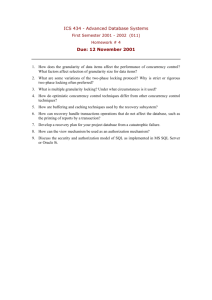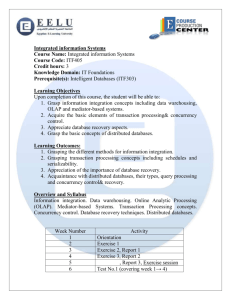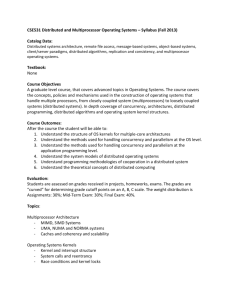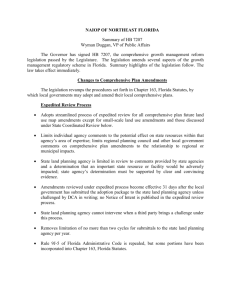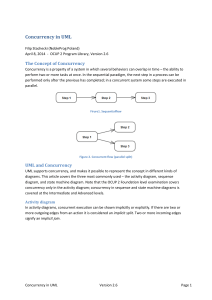Florida Growth Management at a Crossroads
advertisement
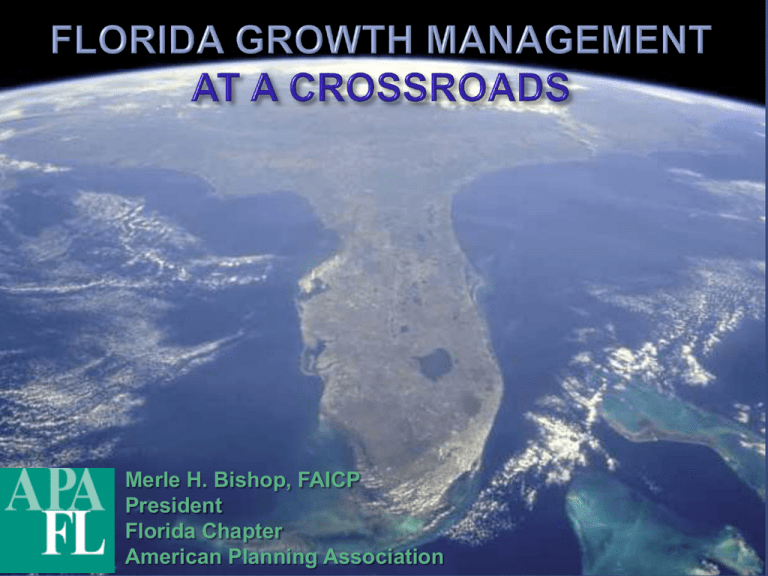
Merle H. Bishop, FAICP President Florida Chapter American Planning Association Major Legislative Changes – What is Eliminated? Rules 9J-5 and 9J-11.023 are repealed – many of the provisions of 9J-5 are incorporated into Ch. 163 Financial feasibility for capital improvement plans – back to pre-2005 status. Twice per year plan amendment limitation. Evaluation and Appraisal Report (EAR) sufficiency review and mandatory plan updates. Energy efficiency & greenhouse gas reduction provisions (added in 2008 by HB 697) Major Legislative Changes – What is Eliminated? Use of the State Comprehensive Plan for local plan compliance determination. State mandated concurrency for transportation, schools and parks & recreation facilities (now a local option). State mandated Public School Element. Major Legislative Changes – What is Changed? Large scale plan amendments: changed to Expedited Review Process with few exceptions (ACSC). Small Scale Map/Plan Amendments: total cumulative acreage increased (80 to 120 acres); no more density cap; no more ownership/distance limit. Text amendments: if associated with small scale, may be included with it. EAR: Localities required to review local Plan once every 7 years; must determine if State requirements necessitate any amendments and notify the State. Major Legislative Changes – What is Changed? The State Planning Agency’s review of comprehensive plan amendments is limited to issues of state-wide interest. Other Changes included: Sector Planning Rural Land Stewardship Developments of Regional Impact Permit extensions Concurrency If a local government decides to not maintain concurrency for transportation, parks &/or schools, then it must amend the comprehensive plan to remove the concurrency provisions. The amendment is not subject to State review, but it does require public hearings. Note: School Facility Elements can be retained with or without level of service standards & school concurrency. Concurrency If a local government elects to retain concurrency for transportation, schools &/or parks, then the local Plan must comply with specified requirements in new Act; many are similar to or same as current Plan requirements. Implementing the new statutory requirements will not require immediate action for all localities but changes are expected at the time of next scheduled EAR. New plan amendments affecting these concurrency issues must comply with the Act’s statutory concurrency requirements. If Public School Concurrency is retained: Comprehensive plans must include specific guidelines and standards relating, including adopted levels of service (as they do now). When a County plus one or more of the cities representing at least 80% of the total, county-wide population elects to maintain school concurrency, then the failure of one or more of the (other) municipalities to adopt concurrency does not preclude its implementation within the school district. No longer a maximum need based strictly on population projections but should allow the operation of real estate markets to provide adequate choices for permanent and seasonal residents and businesses Accommodate a minimumof 10 years growth based on BEBR medium population projections Section 163.3164(51), F.S. defines urban sprawl as a development pattern characterized by low density, automobile-dependent development with either a single use or multiple uses that are not functionally related, requiring the extension of public facilities and services in an inefficient manner, and failing to provide a clear separation between urban and rural uses The amendment must be analyzed to determine whether it incorporates a development pattern or urban form that achieves four or more of the following eight criteria Directs growth and development to areas of the community in a manner that does not adversely impact natural resources Promotes the efficient and cost effective provision or extension of public infrastructure and services Promotes walkable and connected communities and provides for compact development and a mix of uses at densities and intensities that support a range of housing choices and a multimodal transportation system Promotes conservation of water and energy Preserves agricultural areas and activities Preserves open space and natural lands and provides for public open space and recreation needs Creates a balance of land uses based on demands of residential population for the nonresidential needs of an area Would remediate an existing or planned sprawl development pattern or provides for an innovative development pattern such as transit oriented development or new towns We must communicate the importance and value of comprehensive planning and smart growth with effective involvement of all interested and affected persons and groups. Livability Sustainable Community Jobs Economic Recovery and Development Health Water Resources Mobility Senator Bob Graham “For most of Florida's history, up until the mid-1960s, our state was treated like a commodity. If you didn't like it, you changed it: land into water; water into land. The business of the state was business, and our enormous natural resources were just another input. The quality and safety of our coasts, fresh waters, open lands and the Everglades were regularly and enthusiastically sacrificed on the altar of growth.” “Florida is not a commodity but a treasure which we have the privilege of enjoying with the responsibility to preserve and enhance that treasure for future generations.” National Support for Sustainable Communities In Favor 79% Opposed Not Sure Definition given for “sustainable communities”: An urban, suburban, or rural community that has more housing and transportation choices, is closer to jobs, shops or schools, is more energy independent, and helps protect clean air and water. 16% 5% In Favor Opposed Not Sure Ford Foundation, Smart Growth America and Collective Strength poll - 2010 Comprehensive Planning is still required by Florida Law. Florida and Polk’s potential for economic growth and prosperity, protection of valuable environmental resources and improved quality of life will be determined by how well we plan for the future. Local Planning Choices: Ensure a future place where people want to live, work and play; Adopt policies and strategies that address mobility, education & recreation for existing and future residents; Recognize that infrastructure needs will continue to be critical to building and sustaining a livable community. If you are not a place where people want to live, then you are not a place where people will want to invest. www.epa.gov/smartgrowth www.epa.gov/smartgrowth/publications.htm

